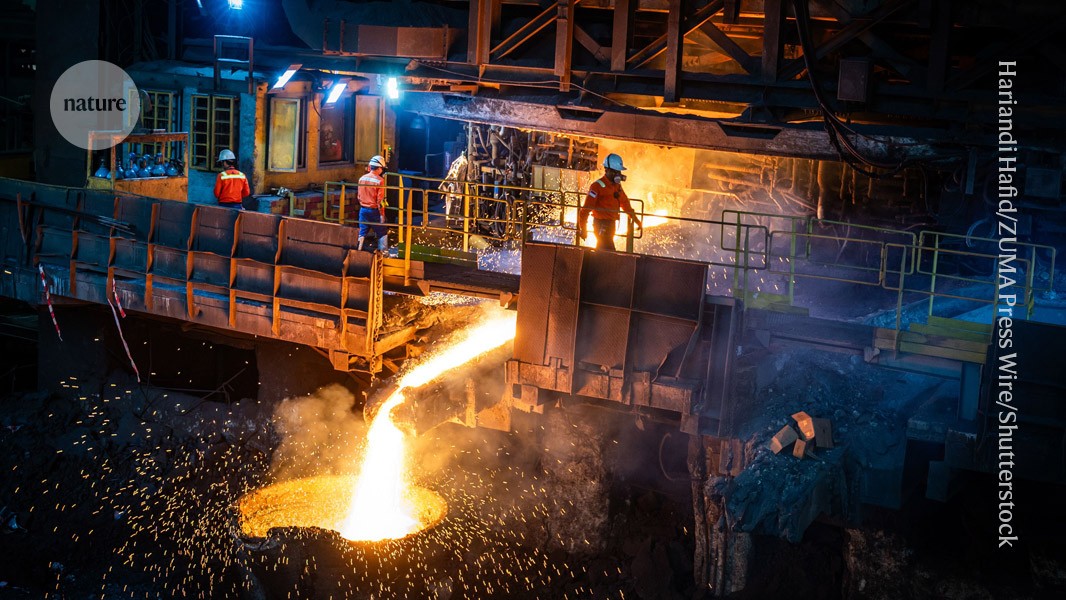Nickel production is notoriously dirty — here’s how to make it greener

If scaled up, a method for extracting nickel without using carbon-rich coke could reduce emissions considerably

A furnace in a nickel ore processing plant in Sorowako, Indonesia. Credit: Hariandi Hafid/ZUMA Press Wire/Shutterstock
Researchers have developed a process for refining nickel that they say could dramatically cut its carbon footprint, which is currently equivalent to the total emissions of a small country.
Implementing the process on an industrial scale would present some engineering challenges, but the experiment, described in Nature on 30 April1, is a first demonstration of principle. “What we did here is to prove that the science works,” says co-author Ubaid Manzoor, a metallurgical engineer at the Max Planck Institute for Sustainable Materials in Düsseldorf, Germany.
Nickel is a key ingredient in stainless steel, and its use in lithium-ion batteries is predicted to lead to a doubling in global nickel demand by 2040. But it is also one of the dirtiest metals to process. “Primary production of nickel is highly carbon-intensive,” says Manzoor. On average, refining one ton of nickel ore produces around 20 tons of carbon dioxide (see ‘Emissions from extraction’).

Source: Ref. 1
That carbon intensity could grow even higher as more nickel is extracted from laterites, a type of ore that is currently underutilised. That process can release more than 40 tons of carbon dioxide per ton of nickel, in part because it uses carbon-rich coke — a material usually derived from coal — to remove oxygen from the rock via a chemical reduction reaction.
Enjoying our latest content?
Login or create an account to continue
- Access the most recent journalism from Nature's award-winning team
- Explore the latest features & opinion covering groundbreaking research
or
Sign in or create an accountdoi: https://doi.org/10.1038/d41586-025-01356-w
This story originally appeared on: Nature - Author:Davide Castelvecchi


















